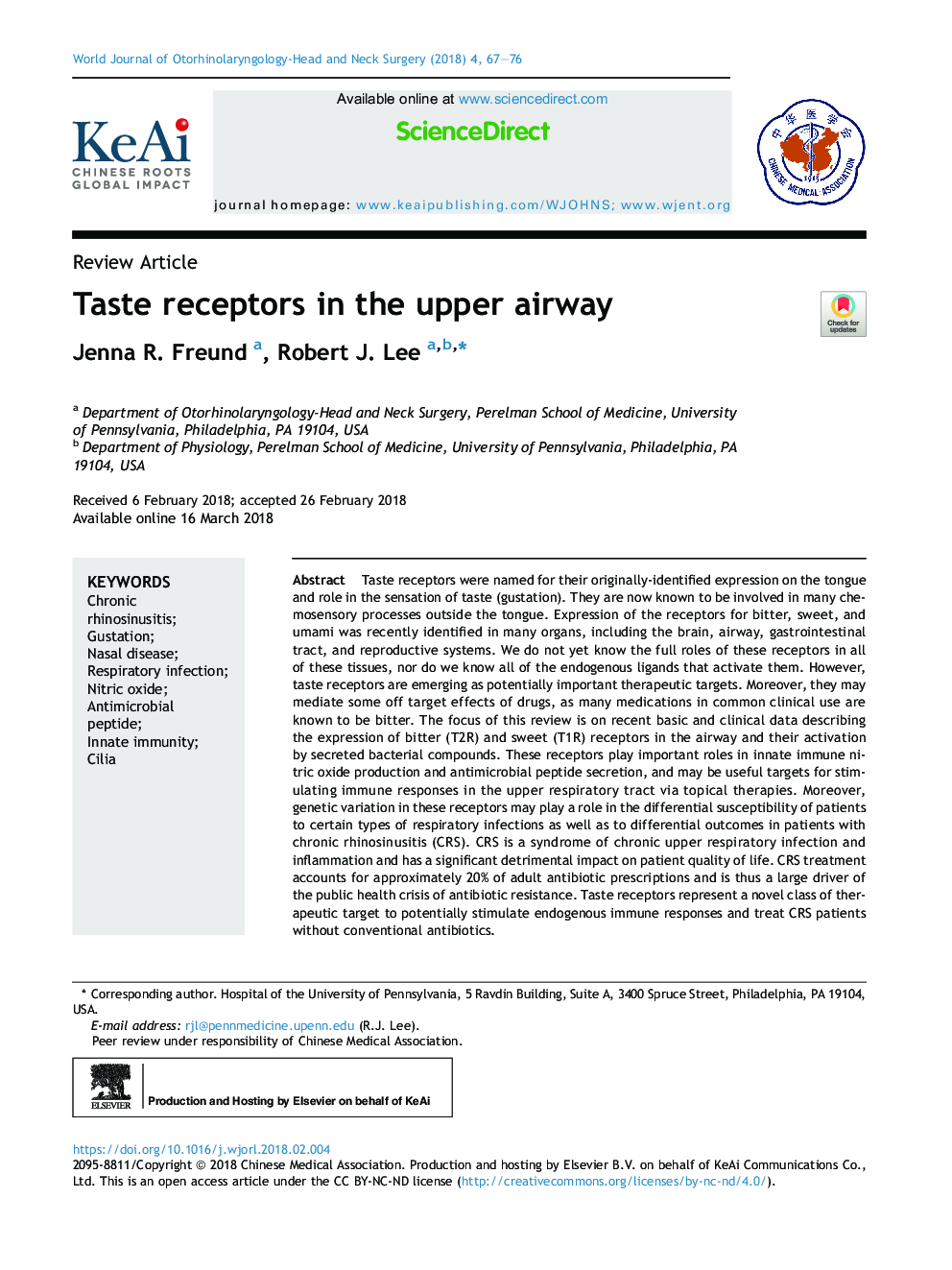| کد مقاله | کد نشریه | سال انتشار | مقاله انگلیسی | نسخه تمام متن |
|---|---|---|---|---|
| 8744026 | 1592710 | 2018 | 10 صفحه PDF | دانلود رایگان |
عنوان انگلیسی مقاله ISI
Taste receptors in the upper airway
ترجمه فارسی عنوان
گیرنده های طعم در راه هوایی بالا
دانلود مقاله + سفارش ترجمه
دانلود مقاله ISI انگلیسی
رایگان برای ایرانیان
کلمات کلیدی
رینویوزیت مزمن، گشتاور، بیماری بینی، عفونت تنفسی، اکسید نیتریک، پپتید ضد میکروبی، ایمنی فزاینده، سیلیا،
موضوعات مرتبط
علوم پزشکی و سلامت
پزشکی و دندانپزشکی
ایمونولوژی، آلرژی و روماتولوژی
چکیده انگلیسی
Taste receptors were named for their originally-identified expression on the tongue and role in the sensation of taste (gustation). They are now known to be involved in many chemosensory processes outside the tongue. Expression of the receptors for bitter, sweet, and umami was recently identified in many organs, including the brain, airway, gastrointestinal tract, and reproductive systems. We do not yet know the full roles of these receptors in all of these tissues, nor do we know all of the endogenous ligands that activate them. However, taste receptors are emerging as potentially important therapeutic targets. Moreover, they may mediate some off target effects of drugs, as many medications in common clinical use are known to be bitter. The focus of this review is on recent basic and clinical data describing the expression of bitter (T2R) and sweet (T1R) receptors in the airway and their activation by secreted bacterial compounds. These receptors play important roles in innate immune nitric oxide production and antimicrobial peptide secretion, and may be useful targets for stimulating immune responses in the upper respiratory tract via topical therapies. Moreover, genetic variation in these receptors may play a role in the differential susceptibility of patients to certain types of respiratory infections as well as to differential outcomes in patients with chronic rhinosinusitis (CRS). CRS is a syndrome of chronic upper respiratory infection and inflammation and has a significant detrimental impact on patient quality of life. CRS treatment accounts for approximately 20% of adult antibiotic prescriptions and is thus a large driver of the public health crisis of antibiotic resistance. Taste receptors represent a novel class of therapeutic target to potentially stimulate endogenous immune responses and treat CRS patients without conventional antibiotics.
ناشر
Database: Elsevier - ScienceDirect (ساینس دایرکت)
Journal: World Journal of Otorhinolaryngology - Head and Neck Surgery - Volume 4, Issue 1, March 2018, Pages 67-76
Journal: World Journal of Otorhinolaryngology - Head and Neck Surgery - Volume 4, Issue 1, March 2018, Pages 67-76
نویسندگان
Jenna R. Freund, Robert J. Lee,
